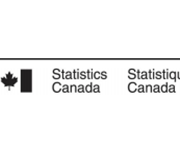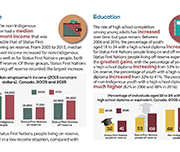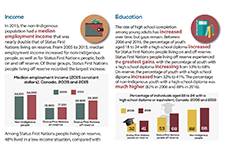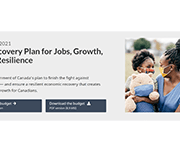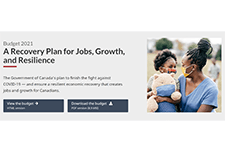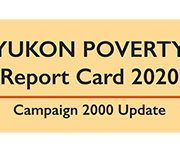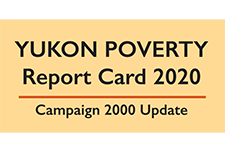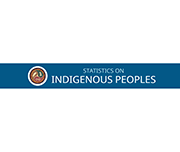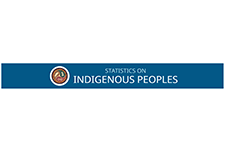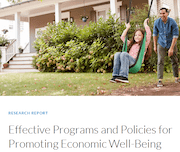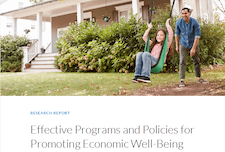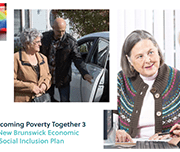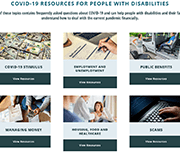Resources and Tools
Managing the cost of goods and paying bills
Budgeting resources
Five different budgeting methods – Prosper Canada
Cash flow budget template – PDF – Prosper Canada
Cash flow budget template – fillable PDF – Prosper Canada
Simple budget template – PDF – Prosper Canada
Simple budget template – fillable PDF – Prosper Canada
Ten ways to trim expenses – Prosper Canada
Ways to save at the grocery store – Prosper Canada
5 budgeting app ideas – Prosper Canada
Tracking spending/bills
Expenses tracking sheet – PDF – Prosper Canada
Expenses tracking sheet – fillable PDF – Prosper Canada
Tracking fluctuating expenses – Prosper Canada
Prioritizing Bills tool – Consumer Financial Protection Bureau (CFPB)
Spending tracker tool – CFPB
Cutting expenses tool – CFPB
Online budgeting tools
Budget Planner (free) – Financial Consumer Agency of Canada (FCAC)
Budget Calculator Spreadsheet (downloadable Excel sheet) – MyMoneyCoach.ca
Spending Habits Calculator – GetSmarterAboutMoney.ca
Personal Budgeting Course (no cost) – Momentum
Pro bono support
Financial planning – Financial Planning Association of Canada (FPAC)
Debt
Action planning
Steps to debt repayment – Prosper Canada
Determining debt payoff order – Prosper Canada
Dealing with debt– Prosper Canada
Making a plan to be debt free– Government of Canada
The 4 cornerstones of debt reduction strategies & budgeting– Credit Counselling Society
Getting out of debt– Credit Counselling Society
Information for consumers on the insolvency process– Office of the Superintendent of Bankruptcy (available in multiple languages)
More resources
Options you can trust to help with your debt – Office of the Superintendent of Bankruptcy
1:1 debt counselling – Credit Counselling Canada
Sample letters to creditors – Credit Counselling Society
Ways to build or rebuild credit and manage debt course (no cost) – Momentum
How to improve your credit score: proven steps to success – Credit Canada
Housing and homelessness
Listing of agencies across Canada that may be able to help – The Canadian Alliance to End Homelessness
211 – United Way Canada
Subsidized housing in ON – Ontario Non-profit Housing Association
Benefits for housing
Housing benefits – Government of Canada
Benefits wayfinder – Prosper Canada
Factsheet: Housing insecure individuals – Government of Canada
Resources for renters
Your rights when being evicted for renovations – Community Legal Education Ontario (CLEO)
Resources for renters facing eviction – Centre for Equality Rights in Accommodation
Moving checklist – Community Legal Education Ontario (CLEO)
Ontario Renters’ guide – Community Legal Education Ontario (CLEO)
How to negotiate a repayment plan with your landlord – Community Legal Education Ontario (CLEO)
Know your rights: eviction prevention – Canadian Centre for Housing Rights
Know your rights: rental housing basics – Canadian Centre for Housing Rights
Know your rights: record keeping for tenants – Canadian Centre for Housing Rights
Rent-Geared-to-Income Subsidy – City of Toronto
An infographic that explains when rent increases are legal – CLEO
A guide that explains when landlords can apply for an above guideline rent increase (AGI), how to prepare for a hearing to fight an AGI, and what happens after the hearing – CLEO
Human Rights and Rental Housing in Ontario: A Self-Advocacy Toolkit – Canadian Centre for Housing Rights
Resources for specific groups
Housing options for seniors – Government of Canada
Toolkit for medical professionals in ON writing disability accommodation letters – Canadian Centre for Housing Rights
Friendship Centres for Indigenous people – National Association of Friendship Centres
Support services for victims of abuse – New Brunswick Government
Housing for youth – 360º (York Region)
Support for young mothers– Albion Centre (Toronto)
Newcomer Information Centre Online– Achēv
Paying your mortgage when experiencing financial difficulties– FCAC
Shelters
Housing and shelters – Salvation Army (Canada)
Disaster relief help – Canadian Red Cross (Canada)
Emergency and short-term housing in Ontario – Ontario Council of Agencies Serving Immigrants (Ontario)
For women facing domestic abuse – Shelter Safe (Canada)
Survivors of domestic violence – CAMH (Toronto)
Shelters – CAMH (Toronto)
Shelters for youth – Rest Centres (Peel Region)
Food insecurity
Access to food
Find a food bank – Food Banks Canada
Regional food banks – Website Planet
Meals on wheels – Ontario Community Support Association
211 – United Way Canada
Drop-in meal resource list for Toronto – Toronto Drop-in Network
Food exchange – Quest Vancouver
Good food organizations – Community Food Centres Canada
Akwe:go – Wasa-Nabin Student Nutrition Program – Ontario Federation of Indigenous Friendship Centres
Friendship Centres for Indigenous people – Ontario Federation of Indigenous Friendship Centres
Understanding food insecurity
Tool for older adults: rate your eating habits! – Older Adult Nutrition Screening
Poverty Screening (Food Insecurity) – Canadian Nutrition Society
Ressources et outils
Gérer le coût des biens et les dépenses
Ressources pour établir un budget
5 façons différentes de faire un budget – Prospérité Canada
Budget de caisse – Prospérité Canada
Modèle de budget simple – Prospérité Canada
10 façons de réduire ses dépenses – Prospérité Canada
Moyens pour économiser à l’épicerie – Prospérité Canada
Suivre les dépenses/le paiement des factures
Fichier de suivi des dépenses – Prospérité Canada
Suivi des dépenses variables – Prospérité Canada
Outils d’établissement de budget en ligne
Planificateur budgétaire – Agence de la consommation en matière financière du Canada (ACFC)
Budget mensuel – Commission des valeurs mobilières de l’Ontario
Calculateur des Habitudes de Consommation – GerezMieuxVotreArgent.ca
Vidéos d’apprentissage en ligne — Notions de base sur les finances – Agence de la consommation en matière financière du Canada (ACFC)
Consultation budgétaire – Espace Finances
Dette
Planification des mesures
Les étapes pour rembourser des dettes– Prospérité Canada
Une dette envers qui? – Prospérité Canada
Gestion de la dette : Livret complet– Prospérité Canada
Faire un plan pour gérer vos dettes– Gouvernement du Canada
Croulez-vous sous les dettes? Information sur la procédure d’insolvabilité à l’intention des consommateurs– Bureau du surintendant des faillites
Autres ressources
Des options fiables pour vous aider avec vos dettes – Bureau du surintendant des faillites
Conseil en crédit – Conseil en crédit du Canada
Exemples de lettres aux créanciers – Conseil en crédit du Canada (disponible seulement en anglais)
Emprunter de l’argent- cours (gratuit) – Plateforme de compétences ABC
Qu’est-ce qu’un pointage de crédit?– TransUnion
Associations de consommateurs de Québec – toutbiencalcule.ca
Logement et itinérance
Recherche d’aide – Alliance canadienne pour mettre fin à l’itinérance
211 – Centreaide United Way
Logement subventionné en Ontario – Association du logement sans but lucratif de l’Ontario (disponible seulement en anglais)
Prestations pour le logement
Prestations relatives au logement – Gouvernement du Canada
Orienteur en mesures d’aide – Prospérité Canada
Personnes en situation de logement précaire – Gouvernement du Canada
Accès au logement – Centre Francophone du Grand Toronto
Répertoire des ressources en hébergement communcautaire et en logement social avec soutien communautaire, Réseau d’aide aux personnes seules et itinérantes de Montréal
Ressources pour les locataires
Être expulsé de son logement en raison de rénovations – Éducation juridique communautaire Ontario
Comment s’opposer à une expulsion – Éducation juridique communautaire Ontario
Louer un logement – Éducation juridique communautaire Ontario
Comment négocier un plan de remboursement avec votre locateur – Centre ontarien de défense des droits des locataires
Votre propriétaire veut-il que vous déménagiez? – Éducation juridique communautaire Ontario
Droit du logement (vidéos) – Éducation juridique communautaire Ontario
Entretien et réparations – Éducation juridique communautaire Ontario
Déménager : Donner un préavis – Éducation juridique communautaire Ontario
Logements à loyer indexés sur le revenu – Ville de Toronto
Les comités logement et associations de locataires du Québec – Regroupement des comités logement et associations de locataires du Québec (RCLALQ) Comités logement – Le Front d’action populaire en réaménagement urbain (FRAPRU)
Ressources pour des groupes particuliers
Coût des résidences pour les aînés – Gouvernement du Canada
Trousse d’outils pour les professionnels de la santé sur la rédaction de lettres concernant des mesures d’adaptation pour une personne en situation de handicap – Centre canadien pour le droit au logement (disponible seulement en anglais)
Association nationale des centres d’amitié – L’Association nationale des centres d’amitié
Services de soutien pour les victimes de violence – Gouvernement du Nouveau-Brunswick
Logement pour les jeunes – 360º (Région de York)
Soutien aux jeunes mères– Centre Albion (Toronto)
Maison d’amitié– Maison d’amitié (Ottawa)
Payer votre hypothèque lorsque vous éprouvez des difficultés financières– ACFC
Refuges
Services d’hébergement – l’Armée du Salut (Canada)
Aide aux personnes sinistrées – La Croix-Rouge canadienne (Canada)
Logement d’urgence et à court terme en Ontario – Ontario Council of Agencies Serving Immigrants (disponible seulement en anglais)
Pour les femmes victimes de violence – Hebergementfemmes.ca (Canada)
Survivants de violence familiale – Centre de toxicomanie et de santé mentale, Toronto (disponible seulement en anglais)
Insécurité alimentaire
Accès à la nourriture
Trouver une banque alimentaire – Banques alimentaires de Canada
La Popote roulante – Croix-Rouge canadienne
211 – Centraide United Way
Organisations pour la bonne nourriture – Centres communautaires d’alimentation du Canada
Banques alimentaires – Banques alimentaires de Québec
Dépannage alimentaire – Macommunaute.ca
Comprendre l’insécurité alimentaire
Évaluez vos habitudes alimentaires ! – Vérification de l’alimentation des adultes plus âgés
Dépistage de la pauvreté (insécurité alimentaire) – Société canadienne de nutrition
English
For frontline staff - Quick tools you can use with clients
Starting the conversation
Here are 7 questions to help you start a conversation about money with your client. Based on what you learn about your clients’ needs, the remaining links on this page to help you find answers and next steps.
Try this coaching readiness checklist to help your client ascertain if they have the time and are interested in receiving financial coaching.
Worksheets & tip sheets
Here are some “go to” worksheets and tip sheets that frontline staff have found very helpful with their clients. They focus on budgeting, saving, and debt management – common FE needs that come up. Try them out for yourself first and see which ones might work for your clients.
The Budget Spreadsheet is an excellent tool for capturing the full picture of an individual’s financial picture. The individual inputs information according to different categories and the tool calculates totals in a summary page to show how much money is left over at the end of the month. [Thunder Bay Counselling]
The Simple budget template is an alternative monthly budget tool clients can use. It includes links to an Income tracking worksheet and Expenses tracking worksheet. [Prosper Canada / Trove]
The Urgent vs Important worksheet can help clients prioritize their spending. This, in turn, can help them save or “find money” for necessary expenses. [Prosper Canada / Trove]
Knowing how to set a SMART goal is important for planning and achieving targets. In the Set a SMART financial goal, clients learn what a SMART goal is and write SMART financial goals that are important to them. [Prosper Canada / Trove]
Making a spending plan is a worksheet clients can use to create a spending plan for each week based on money coming in and out each month. [Prosper Canada / Trove]
Making a debt action plan is a worksheet to help your clients get a handle on their debt. [Prosper Canada / Trove]
Tips for Managing Debt and Bills is a reference sheet you can give clients during tough times when managing cash flow is a challenge.
Prioritizing bills helps clients prioritize what bills to pay when it’s not possible to pay for everything. Note that this tool is from the Consumer Financial Protection Bureau (CFPB), an American government agency and includes a link to their website. Let clients know the information on the website is geared to the US context. [Consumer Financial Protection Bureau]
Online sites and tools
Here are great online tools you can also share and use in your FE work with clients.
Benefits wayfinder [benefitswayfinder.org]
Support with access to benefits is another powerful FE intervention. The Benefits wayfinder is a simple, easy to use, plain language tool that helps people on low and modest incomes find and track benefits they could get. Clients can use it on their own or with your support.
Read the Benefits wayfinder fact sheet to learn more.
Then watch the How to use this tool video. It highlights and demonstrates how to navigate through the key features of the tool.
If you would like additional training on how to support your clients with access to benefits and use the Benefits wayfinder tool in your money conversations, you can sign up for Prosper Canada’s self-directed online course and/or live workshop.
Trove [yourtrove.org]
Trove is a free bilingual website that clients can visit on their own or with your support. Many of the tools you were introduced to above can be found on Trove, along with a wealth of other user-friendly financial tools, worksheets, and education information to help clients take charge of their spending, learn about tax filing and benefits, and manage debt.
Along with a link to the Benefits wayfinder, you can also find these online tools:
- My money in Canada is a website that can help clients build healthy money habits with simple, easy to use learning modules on a range of money topics. The site also includes videos and a financial wellness checklist for clients.
- The RDSP Calculator for Canadians can be used to assess the potential of opening and contributing to a Registered Disability Savings Plan.
For managers - Tools for getting started with financial empowerment
The resources below focus on starting steps and tools to assist in the initial planning and implementation stages for embedding FE. Future phases of the toolkit will share resources for later stage efforts, as well as non-municipal efforts, such as public libraries and health care systems.
Tool 1. Making the case for financial empowerment
For FE to be successful, it’s critical to get buy-in from staff and stakeholders.
Below are great resources to share with key players who are new to FE. They can help you get others quickly up to speed on what FE is and the value of embedding FE as you onboard them or work to build interest in FE in your municipality.
- Prosperity Gateways Primer gives a quick overview of the “what” and “why” of embedding FE into municipal services.
- FE Brochure provides a more detailed introduction to FE and embedding FE.
- Here are three case examples you can use to show the powerful impact embedding FE into municipal services can have:
- Case example: York region
- Case example: TESS
- Case example: Edmonton
Tool 2. Getting started: the internal scan
Take the time to learn about common FE interventions. Then, assess conditions, capacity and considerations in your municipality for providing these kinds of financial help to your clients.
This tool guides you through an internal scan as you envision what embedding FE might look like in your service delivery context. Consider Tool 2: Getting started: the internal scan a starting point that will continue to evolve as you move through the process.
Tool 3. Exploring partnerships: the external scan
Municipalities do not have to deliver FE supports themselves to turn their services into Prosperity Gateways. In many cases, especially at the outset, it may be more cost-effective and less resource intensive to establish referral pathways to other local service providers or to partner with non-profit organizations, foundations, or financial service providers to deliver the financial help to meet your clients’ needs.
Use Tool 3: Exploring collaborations and partnerships to perform a scan of FE services in your local community and identify potential collaborations and partnerships.
Two additional partnership resources are ‘Elements of Integration‘ and ‘Partnership Tip Sheet‘
Tool 4. Designing the initiative: the service blueprint
Having completed an internal and external scan of barriers and opportunities, you are now ready to design an FE initiative to suit your municipality’s context. Designing the initiative is an important phase where you work out the service model, clarify partnerships, and imagine the ideal client experience.
Tool 4: Designing the initiative guides you through choosing the best service delivery model for your context and designing the client and staff journey.
We hope this toolkit will grow and improve with use and feedback. Current ideas for upcoming tools include:
- Understanding your clients’ financial capability
- Building a successful team
- Supporting staff for success
- Setting up effective data collection and evaluation processes
Tool 5. Designing the initiative: a shadowing guide
Tool 5: A shadowing guide can help frontline staff understand the process from intake to service delivery.
Feedback / Suggestions
We’d love to hear your feedback and suggestions for tools that you would find useful. Please email: [email protected].
Learn more about FE
Canadian Publications
Prosperity Gateways: Cities for financial empowerment – Building the case outlines evidence for embedding FE.
Read the report How financial empowerment services are helping Ontarians build financial health for more supporting evidence and personal stories.
Financial Empowerment – What is it and how it helps reduce poverty [national] suggests that FE is a critical missing piece of federal government policy that can significantly boost client outcomes when it is embedded into other programs and services.
Financial Empowerment – What is it and how it helps reduce poverty [Alberta] provides an overview of provincial government action on FE in Alberta. The Alberta government adapted the national document (by the same name) to use in their internal discussions with municipal decision-makers. Create a document that you can use for your internal discussions using this as an example.
U.S. Publications
The municipal integration of FE in Canada is grounded in influential work in the US by the Cities for Financial Empowerment (CFE) Fund. Launched in 2012 in New York the CFE Fund showed that embedding FE strategies into local government infrastructure can have a “supervitamin effect” on public programs, increasing the financial stability of low to moderate income households.
- Read the pioneering article: “Municipal Financial Empowerment: A Supervitamin for Public Programs”
- Learn more about their Financial Empowerment Centers model in this 4-minute video
- Visit their website to see resources and sign up for their quarterly newsletter
- See a three-year evaluation of the model in 5 cities across the US. “An Evaluation of Financial Empowerment Centers – Building People’s Financial Stability as a Public Service”
The Urban Institute examined the cost of residents’ financial insecurity to city budgets in 10 American cities in this 2017 research. Across these cities, the costs range from the tens to hundreds of millions of dollars, suggesting that cities have an economic interest in improving their residents’ financial health.
A report by JP Morgan Chase reviews municipal efforts to integrate financial capability into public services in several US locations in “A Scan of Municipal Financial Capability Efforts.”
French
Pour le personnel de première ligne — Outils rapides que vous pouvez utiliser avec les clients
Amorcer la conversation
Voici sept questions qui vous aideront à entamer une conversation à propos de l’argent avec votre client. En fonction de ce que vous avez appris sur les besoins de vos clients, les autres liens de cette page vous aideront à trouver des réponses et à connaître les prochaines étapes.
Utilisez cette liste de vérification pour aider votre client à décider s’il a le temps et s’il souhaite recevoir un accompagnement financier.
Fiches de travail et fiches de conseils
Voici quelques feuilles de travail et des feuilles de conseils que le personnel de première ligne a trouvé très utiles pour ses clients. Elles portent principalement sur la planification budgétaire, l’épargne et la gestion des dettes — les besoins courants en matière d’AF qui se présentent. Essayez-les d’abord pour vous-même et voyez ceux qui pourraient convenir à vos clients.
La feuille de calcul du budget (anglais seulement) est un excellent outil pour saisir le portrait complet de la situation financière d’un individu. La personne saisit les données selon différentes catégories et l’outil calcule les totaux dans une page de synthèse pour montrer combien d’argent il reste à la fin du mois. [Thunder Bay Counselling]
Le modèle de budget simple est un outil alternatif de budget mensuel que les clients peuvent utiliser. Il comprend des liens vers une feuille de calcul de suivi des revenus et une feuille de calcul de suivi des dépenses. [Prospérité Canada/Trove]
La feuille de calcul Urgent versus Important peut aider les clients à établir des priorités dans leurs dépenses. Cela peut ensuite les aider à économiser ou à « trouver de l’argent » pour les dépenses nécessaires. [Prospérité Canada/Trove]
Il est important de savoir comment établir un objectif INTELLIGENT pour mettre en place et atteindre des objectifs. Avec l’outil Comment établir des objectifs financiers INTELLIGENTS, les clients apprennent ce qu’est un objectif INTELLIGENT et choisissent des objectifs financiers INTELLIGENTS qui sont importants pour eux. [Prospérité Canada/Trove]
La feuille de calcul Comment établir un plan de dépenses est un outil que les clients peuvent utiliser pour créer un plan de dépenses pour chaque semaine en fonction des entrées et sorties d’argent du mois. [Prospérité Canada/Trove]
La feuille de calcul Élaboration d’un plan d’action en matière de dettes est un outil pour aider vos clients à prendre le contrôle sur leurs dettes. [Prospérité Canada/Trove]
Conseils pour la gestion des dettes et des factures est une feuille de référence que vous pouvez donner à vos clients dans les moments difficiles où la gestion des fonds est un défi.
Le classement des factures par ordre de priorité (anglais seulement) aide les clients à déterminer les factures à payer en premier lorsqu’il n’est pas possible de tout payer. Notez que cet outil provient du Consumer Financial Protection Bureau (CFPB), une agence gouvernementale américaine, et comprend un lien vers son site Web. Expliquez aux clients que les renseignements figurant sur le site Web sont adaptés au contexte américain. [Consumer Financial Protection Bureau]
Sites et outils en ligne
Voici d’excellents outils en ligne que vous pouvez également faire connaître et utiliser dans votre travail en matière d’AF avec les clients.
Orienteur en mesures d’aide [benefitswayfinder.org/fr]
L’aide à l’accès aux mesures d’aide est une autre façon puissante d’intervenir en matière d’AF. L’Orienteur en mesures d’aide est un outil simple, facile à utiliser et rédigé en langage clair qui aide les personnes à revenus faibles ou modestes à trouver et à répertorier les mesures d’aide auxquelles elles peuvent prétendre. Les clients peuvent l’utiliser seuls ou avec votre aide.
Pour en savoir plus, lisez la fiche d’information sur l’Orienteur en mesures d’aide. (anglais seulement)
Ensuite, regardez la vidéo Comment utiliser cet outil (anglais seulement). Elle explique et démontre comment naviguer à travers les principales caractéristiques de l’outil.
Si vous souhaitez obtenir une formation supplémentaire sur la façon d’aider vos clients à accéder aux mesures d’aide et d’utiliser l’Orienteur en mesures d’aide dans vos conversations au sujet de l’argent, vous pouvez vous inscrire au cours autodidacte en ligne ou à l’atelier en direct de Prospérité Canada.
Trove [yourtrove.org/fr]
Trove est un site Web bilingue gratuit que les clients peuvent visiter par eux-mêmes ou avec votre aide. La plupart des outils qui vous ont été présentés ci-dessus se trouvent sur Trove, ainsi qu’une multitude d’autres outils financiers conviviaux, des feuilles de calcul et des renseignements éducatifs pour aider les clients à prendre en charge leurs dépenses, à se renseigner sur la déclaration et les avantages fiscaux et à gérer leurs dettes.
En plus d’un lien vers l’Orienteur en mesures d’aide, vous trouverez également ces outils en ligne :
- Mon argent au Canada est un site Web qui peut aider les clients à acquérir de bonnes habitudes en matière de gestion de l’argent grâce à des modules d’apprentissage simples et faciles à utiliser sur toute une série de sujets liés à l’argent. Le site comprend également des vidéos (anglais seulement) et un questionnaire relatif au bien-être financier pour les clients.
- La calculatrice du REEI pour les Canadiens peut être utilisée pour évaluer la possibilité d’ouvrir et de cotiser à un régime enregistré d’épargne-invalidité.
Pour les gestionnaires — Outils pour démarrer avec l’autonomisation financière
The resources below focus on starting steps and tools to assist in the initial planning and implementation stages for embedding FE. Future phases of the toolkit will share resources for later stage efforts, as well as non-municipal efforts, such as public libraries and health care systems.
Outil 1. Argumenter en faveur de l’autonomisation financière.
Pour que l’AF soit un succès, il est essentiel d’obtenir l’adhésion du personnel et des intervenants.
Vous trouverez ci-dessous d’excellentes ressources à faire connaître aux acteurs clés qui ne connaissent pas encore l’AF. Elles peuvent vous aider à faire comprendre rapidement aux autres ce qu’est l’AF et la pertinence d’intégrer l’AF lorsque vous les accueillez ou lorsque vous travaillez à susciter l’intérêt pour l’AF dans votre municipalité.
● L’abécédaire des passerelles pour la prospérité (anglais seulement) donne un aperçu de « qu’est-ce que c’est » et du « pourquoi » au sujet de l’intégration de l’AF dans les services municipaux.
● La brochure de l’AF (anglais seulement) fournit une introduction plus détaillée à l’AF et à l’intégration de l’AF.
● Voici trois exemples de cas que vous pouvez utiliser pour montrer l’impact puissant que peut avoir l’intégration de l’AF dans les services municipaux :
o Exemple de cas : Région de York
o Exemple de cas : Services sociaux et d’emploi de Toronto
o Exemple de cas : Edmonton
Outil 2. Commencer : l’analyse interne
Prenez le temps de vous renseigner sur les types d’interventions courantes en matière d’AF. Ensuite, évaluez les conditions, la capacité et les considérations dans votre municipalité pour fournir ces types d’aide financière à vos clients.
Cet outil vous guide à travers une analyse interne qui vous permet d’envisager ce que pourrait être l’intégration de l’AF dans votre contexte de prestation de services.
Considérez l’outil 2 : Commencer : l’analyse interne un point de départ qui continuera à évoluer à mesure que vous avancerez dans le processus.
Outil 3. Explorer les partenariats : l’analyse externe
Les municipalités ne sont pas obligées de fournir elles-mêmes des mesures d’aides en matière d’AF pour transformer leurs services en passerelles pour la prospérité. Dans de nombreux cas, surtout au début, il peut être plus rentable et moins exigeant sur le plan des ressources d’établir des liens de référence vers d’autres prestataires de services locaux ou de s’associer à des organismes à but non lucratif, des fondations ou des prestataires de services financiers pour fournir l’aide financière répondant aux besoins de vos clients.
Utilisez l’outil 3 : Explorer les collaborations et les partenariats pour effectuer une analyse des services en matière d’AF dans votre communauté locale et identifier les collaborations et partenariats potentiels.
Deux autres ressources à propos du partenariat sont les « Éléments de l’intégration » et les « Conseils pour le partenariat » .
Outil 4. Concevoir l’initiative : le plan de service
Après avoir effectué une analyse interne et externe des obstacles et des opportunités, vous êtes maintenant prêt à concevoir une initiative d’AF adaptée au contexte de votre municipalité. La conception de l’initiative est une phase importante où vous élaborez le modèle de service, clarifiez les partenariats et imaginez l’expérience client idéale.
L’outil 4 : Conception de l’initiative vous guide dans le choix du meilleur modèle de prestation de services pour votre contexte et dans la conception du parcours du client et du personnel.
Nous espérons que cette boîte à outils se développera et s’améliorera avec l’utilisation et les commentaires. Les idées actuelles pour les outils à venir incluent :
- Comprendrela capacité financière de vos clients
- Mettresur pied une équipe performante
- Soutenirle personnel pour qu’il réussisse
- Mettreen place des processus efficaces de collecte de données et d’évaluation
Outil 5. Concevoir l’initiative : un guide d’observation
L’outil 5 : Un guide d’observation peut aider le personnel de première ligne à comprendre le processus, de l’accueil à la mise en œuvre du service.
Commentaires et suggestions
Nous serions ravis d’entendre vos commentaires et vos suggestions d’outils que vous trouveriez utiles. Veuillez nous envoyer un courriel : [email protected].
En savoir plus en matière d’AF
Publications canadiennes
Passerelles de prospérité : Les villes pour l’autonomisation financière — établir le dossier (anglais seulement) décrit les preuves qui sont pour l’intégration de l’AF.
Lisez le rapport intitulé Comment les services d’autonomisation financière aident les Ontariens à renforcer leur santé financière (anglais seulement) pour obtenir plus de preuves et de récits personnels.
Le document Autonomisation financière — qu’est-ce que c’est et comment cela aide à réduire la pauvreté [national] (anglais seulement) suggère que l’autonomisation financière est une pièce manquante essentielle de la politique du gouvernement fédéral qui peut considérablement améliorer les conditions de vie des clients lorsqu’elle est intégrée à d’autres programmes et services.
Le document Autonomisation financière — qu’est-ce que c’est et comment cela aide à réduire la pauvreté [Alberta] (anglais seulement) donne un aperçu de la démarche du gouvernement provincial en matière d’AF en Alberta. Le gouvernement de l’Alberta a adapté le document national (du même nom) pour l’utiliser dans ses discussions internes avec les décideurs municipaux. Créez un document que vous pourrez utiliser pour vos discussions internes en utilisant cet exemple.
Publications américaines
L’intégration municipale de l’AF au Canada est fondée sur les travaux influents réalisés aux États-Unis par le Fonds Cities for Financial Empowerment (CFE). Lancé en 2012 à New York, le Fonds CFE Fund a montré que l’intégration de stratégies d’AF dans l’infrastructure des gouvernements locaux peut avoir un « effet super vitaminé » sur les programmes publics, en augmentant la stabilité financière des ménages à revenu faible ou modéré.
- Lisez l’article pionnier : « Municipal Financial Empowerment: A Supervitamin for Public Programs » (anglais seulement)
- Apprenez-en davantage sur leur modèle de centres d’autonomisation financière (anglais seulement) dans cette vidéo de quatre minutes.
- Visitez leur site Web (anglais seulement) pour voir les ressources et vous inscrire à leur infolettre trimestrielle.
- Découvrez une évaluation de trois ans du modèle dans cinq villes des États-Unis. « An Evaluation of Financial Empowerment Centers – Building People’s Financial Stability as a Public Service » (anglais seulement)
L’Urban Institute a examiné le coût de l’insécurité financière des résidents sur les budgets municipaux de dix villes américaines dans cette recherche de 2017 (anglais seulement). Dans ces villes, les coûts vont de dizaines à des centaines de millions de dollars, ce qui suggère que les villes ont un intérêt économique à améliorer la santé financière de leurs résidents.
Un rapport de JP Morgan Chase passe en revue les efforts déployés par les municipalités pour intégrer la capacité financière dans les services publics dans plusieurs villes américaines dans « A Scan of Municipal Financial Capability Efforts » (anglais seulement).
The effects of child tax benefits on the income of single mothers
The financial resources available to families with young children are an important factor affecting child development, and they can have long-term impacts on socioeconomic outcomes in adulthood. This article summarizes the findings of a new study using Statistic Canada’s data and analyzes the effects of expanding child tax benefits on after-tax income among single mothers, in the context of the 2015 reform to the Universal Child Care Benefit (UCCB) and the 2016 introduction of the Canada Child Benefit (CCB).
A snapshot: Status First Nations people in Canada
This is a custom report produced in collaboration between the Assembly of First Nations and Statistics Canada. It includes a variety of social and economic statistics for Status First Nations people living on and off reserve and includes comparisons with the non-Indigenous population.
Impact of the COVID-19 Crisis on Montreal “Cultural Communities”
This exploratory study aims to better understand the challenges experienced by members of cultural communities in Montreal, particularly the most disadvantaged groups, during the COVID-19 pandemic in the Spring of 2020.
Proposals for a Northern Market Basket Measure and its disposable income
As stated in the Poverty Reduction Act, the Market Basket Measure (MBM) is now Canada’s Official Poverty Line. The Northern Market Basket Measure (MBM-N) is an adaptation of the MBM that reflects life and conditions in two of the territories – Yukon and Northwest TerritoriesNote. As with the MBM, the MBM-N is comprised of five major components: food, clothing, transportation, shelter and other necessities. The MBM-N is intended to capture the spirit of the existing MBM (i.e., represent a modest, basic standard of living) while accounting for adjustments to the contents of the MBM to reflect life in the North. This discussion paper describes a proposed methodology for the five components found in the MBM-N, as well as its disposable income. This discussion paper also provides an opportunity for feedback and comments on the proposed methodology of the MBM-N.
Budget 2021: A Recovery Plan for Jobs, Growth, and Resilience
The federal budget released on April 19, 2021 covers the Canadian government's plan for:
Yukon Poverty Report Card 2020
This report was released as part of public education movement Campaign 2000's annual assessment of child and family poverty in Canada, providing an overview of the following key issues relating to poverty in Yukon:
Disability Inclusion Analysis of Lessons Learned and Best Practices of the Government of Canada’s Response to the COVID-19 Pandemic
This report provides the findings of research conducted to assist Employment and Social Development Canada in identifying good or best practices and lessons learned from the response to the COVID-19 pandemic in Canada. Conducted in partnership with the DisAbled Women’s Network of Canada (DAWN), this research helps us better understand how diverse people with disabilities in Canada have been affected by the COVID-19 pandemic and the effects of government COVID-19 measures on diverse people with disabilities in Canada.
The Inequality of Poverty
This report explores the connections between low income, poverty and protected characteristics, how these can shape the experience of poverty, and whether this can result in a similar inequality in terms of when and how poverty premiums are incurred. COVID-19 has thrown light on the link between insecure work, low incomes and protected characteristics, with an opportunity for this link to be formally recognised. The pandemic, and the economic consequences look likely to throw many more people into poverty, and this poverty is falling hardest on those with protected characteristics.
Statistics on Indigenous peoples
This data hub includes data on the following subjects:
Overcoming Poverty Together 3: The New Brunswick Economic and Social Inclusion Plan 2020-2025
The new Economic and Social Inclusion plan for New Brunswick builds upon progress accomplished over the past 10 years. It includes nine priority actions divided into three pillars: The objective of the plan is to reduce income poverty by at least 50 per cent by 2030, in line with the objectives of Opportunity for All, Canada’s first poverty reduction strategy, and those of the 2030 Agenda for Sustainability of the United Nations.
Strengthening the Economic Foundation for Youth and Young Adults During COVID & Beyond
The unemployment rate for young workers ages 16–24 jumped from 8.4% to 24.4% from spring 2019 to spring 2020 in the United States, representing four million youth. While unemployment for their counterparts ages 25 and older rose from 2.8% to 11.3% the Spring 2020 unemployment rates were even higher for young Black, Hispanic, and Asian American/Pacific Islander (AAPI) workers (29.6%, 27.5%, and 29.7%, respectively. The following speakers discuss how to build financial security for youth (16-24) in this webinar: Monique Miles, Aspen Institute, Forum for Community Solutions, Margaret Libby, My Path, Amadeos Oyagata, Youth Leader, and Don Baylor, The Annie E. Casey Foundation (moderator).
COVID-19 Resources for people with disabilities
National Disability Institute (NDI)'s Financial Resilience Center offers resources and assistance to help those with disabilities and chronic health conditions navigate financially through the COVID-19 crisis. Resource topics include:




